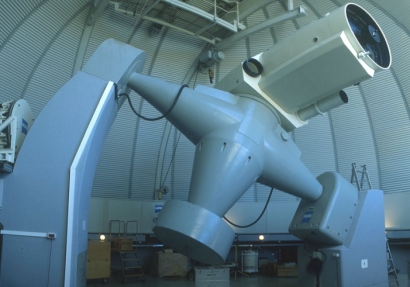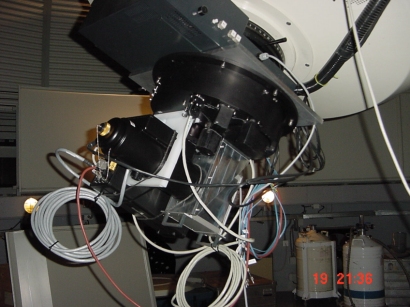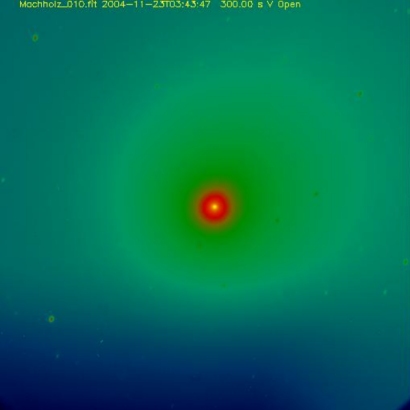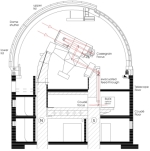Optical Ground Station
 |
|
Figure 1: The building of the OGS, Tenerife. |
|
|
|
Figure 2: Schematic layout of the OGS |
The telescope is mounted in an English mount configuration (see Figure 3). The telescope allows for focal plane instrumentation in the Cassegrain focus, as well as in the Coudé focus (but then with effectively 39 m focal length). SCI-AI is using both foci for tests of newly developed camera systems.
At the Cassegrain focus a system is under construction to allow for imaging and dispersive spectrography. In the first instance this is done using an off-the shelf CCD LN-cooled camera. This will serve as the test vehicle for future devices and instrumentation, such as APS detectors for instance. This camera was recently mounted and commissioned at the telescope. Figure 4 shows how the camera and associated filter wheel is attached.
 |
|
Figure 3: Image of the OGS from inside the dome |
 |
|
Figure 4: Mounting of the filter wheel and camera at the Ritchey-Chrétien focus of the telescope. |
 |
|
Figure 5: First light with the CCD |
All the systems will be exploited with scientific objectives in collaboration with staff from the Research and Scientific Support Department. Initially the current CCD camera at the Cassegrain focus will be used for monitoring of asteroids in support for ESA's Rosetta mission, and for long term monitoring of comets. This is illustrated by the image below showing the comet C/2004 Q2 (Machholz).
 |
|
Figure 6: False colour image of comet C/2004 Q2 (Machholz) |


